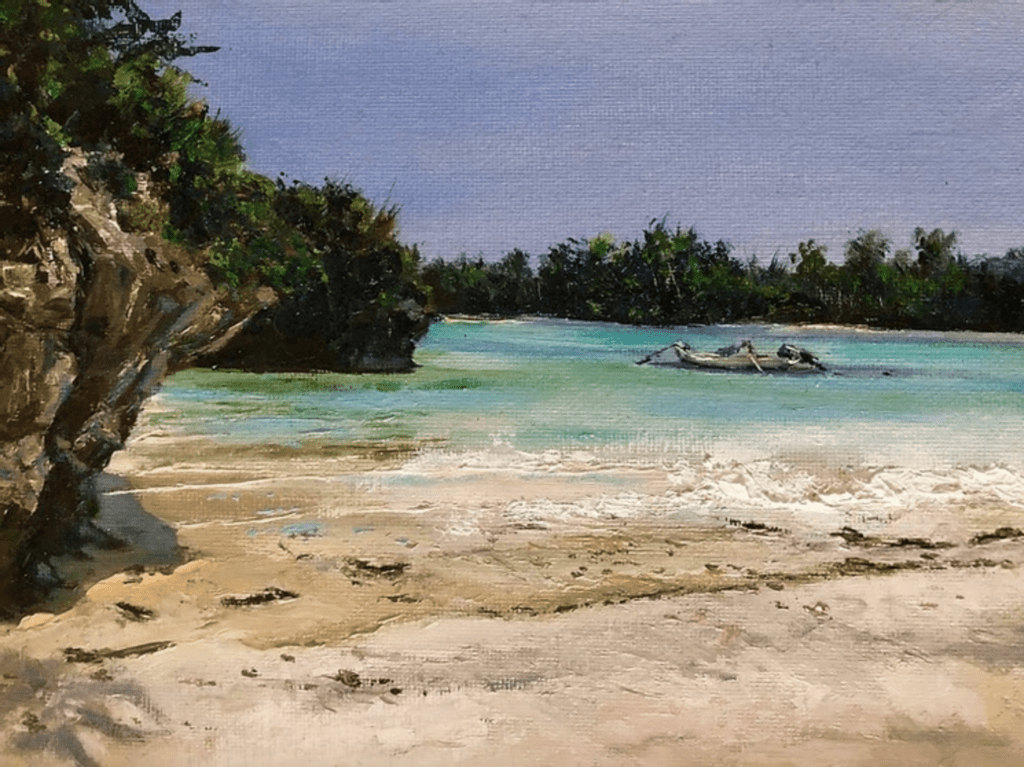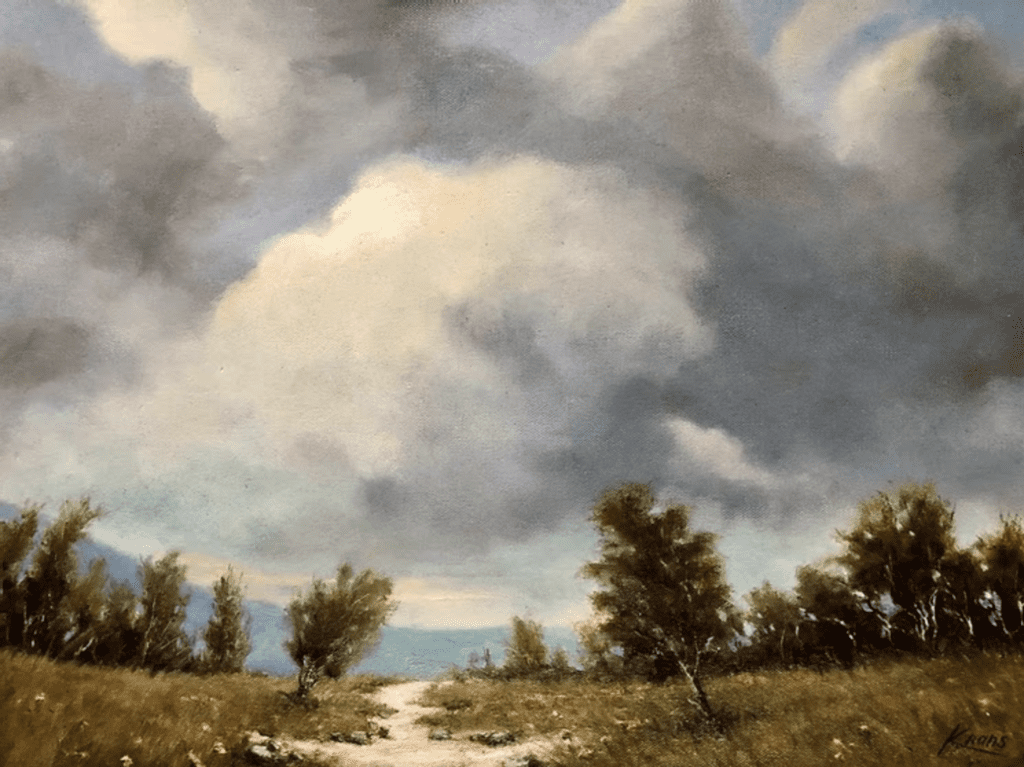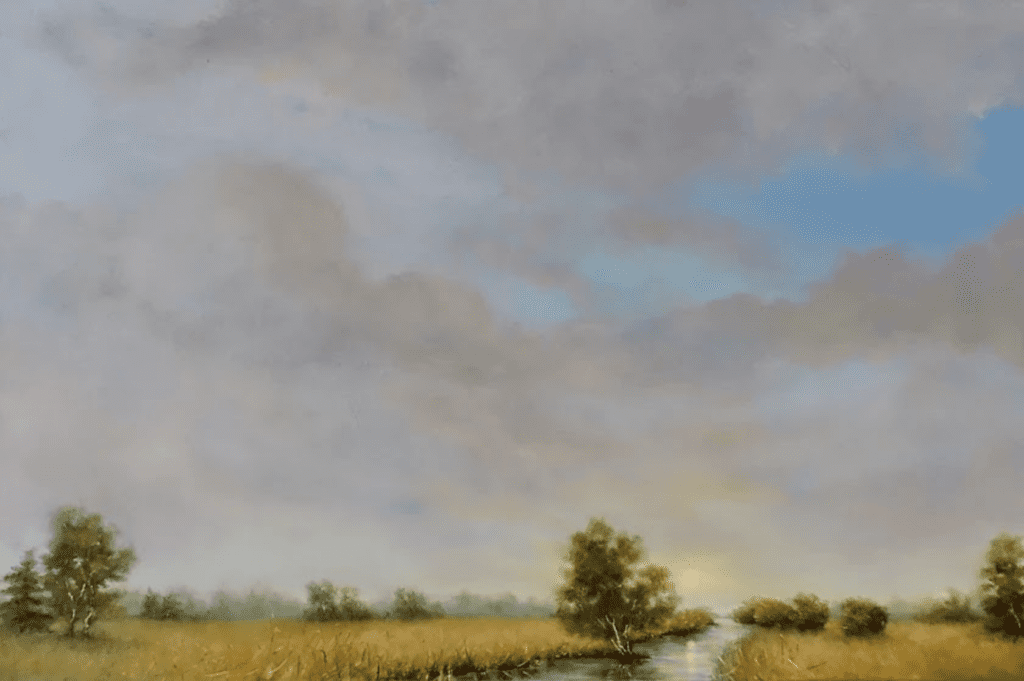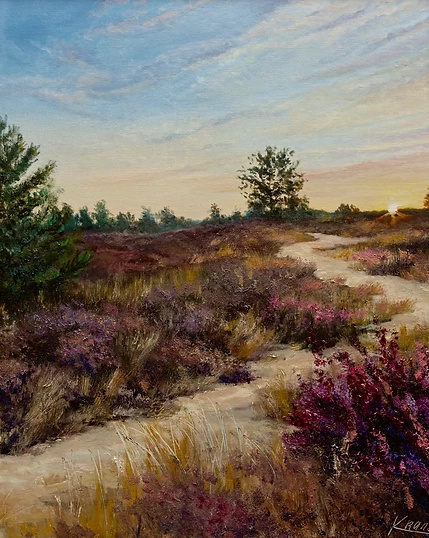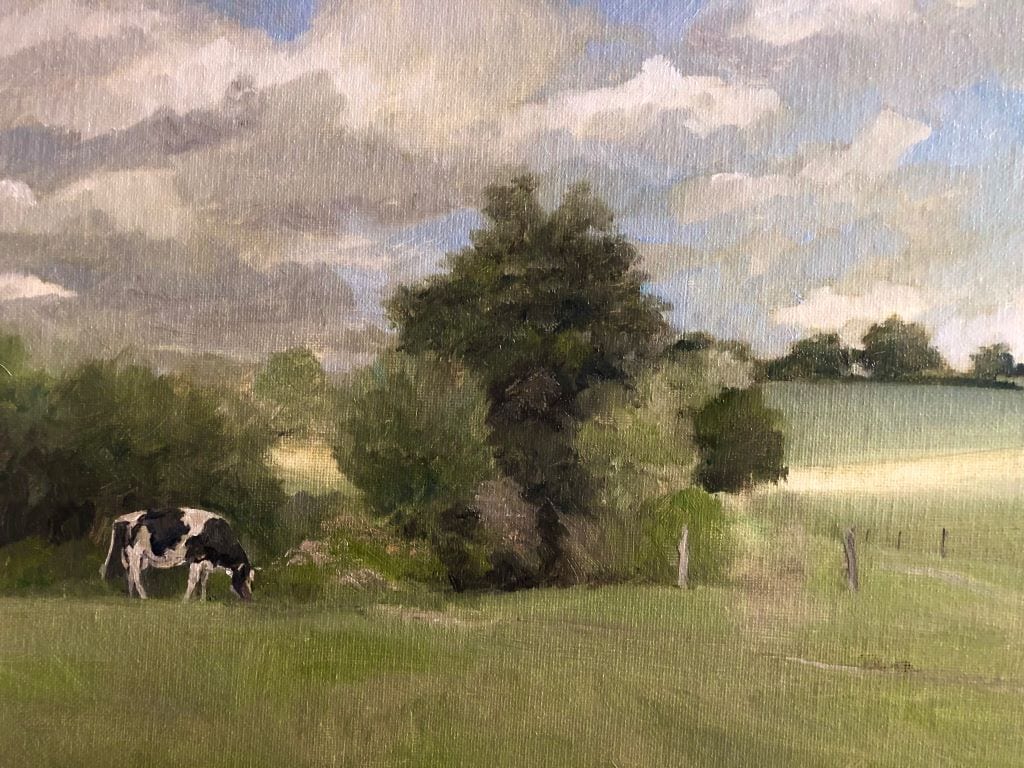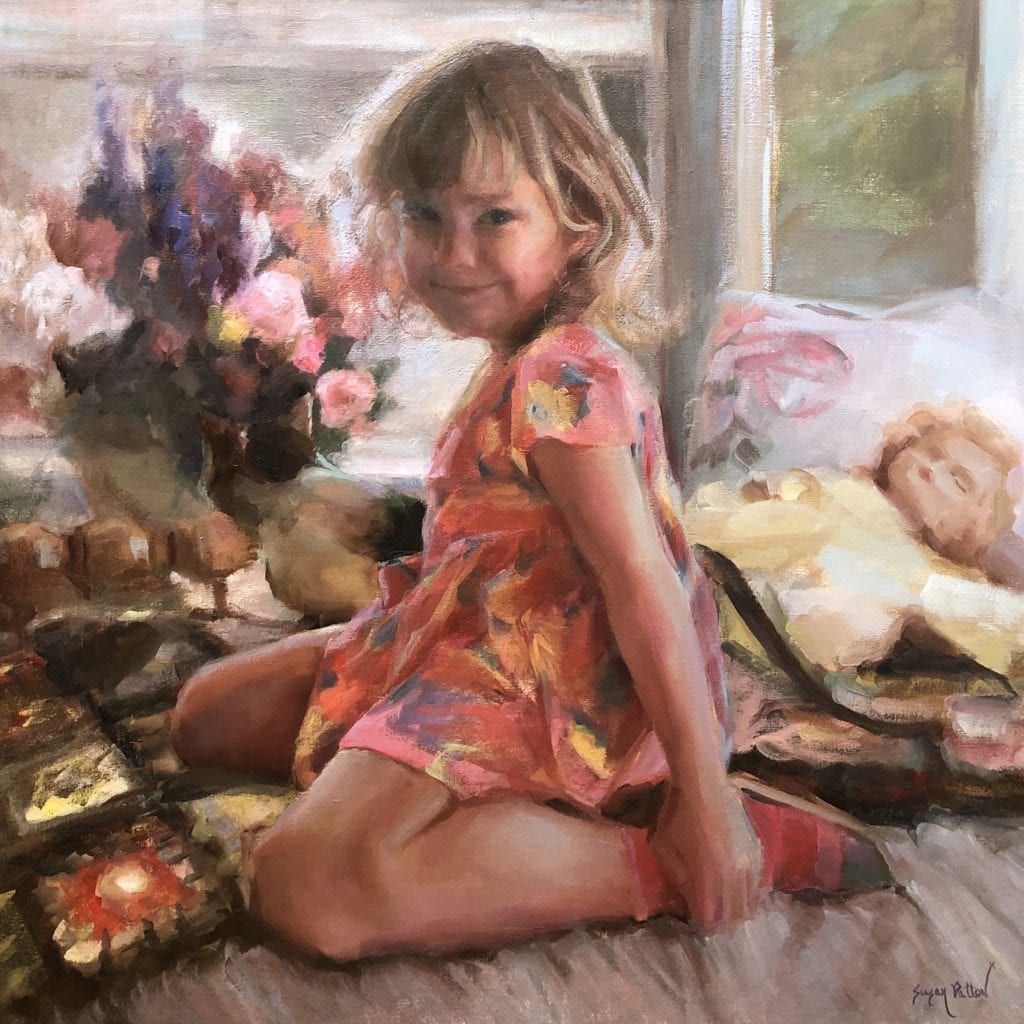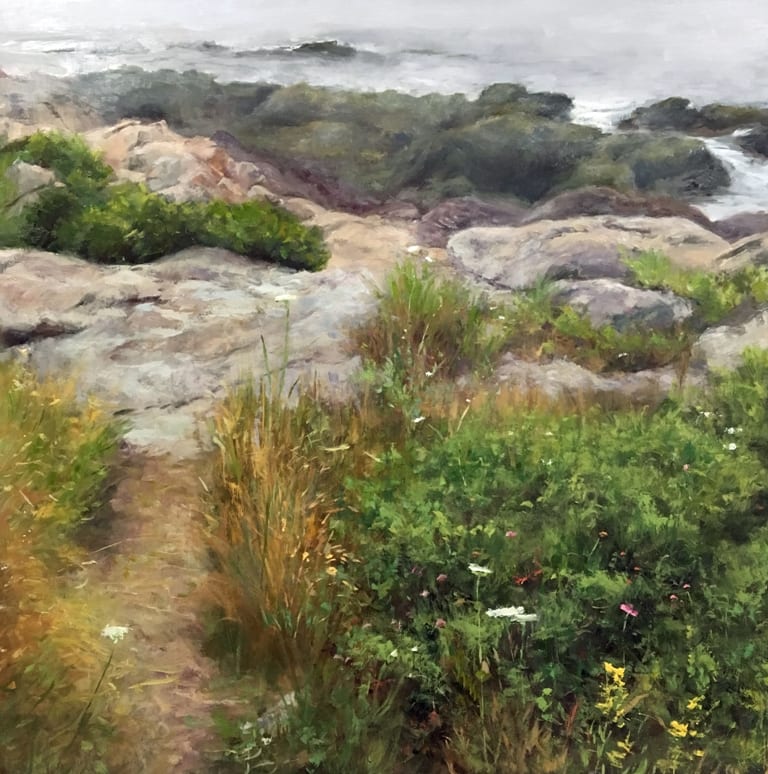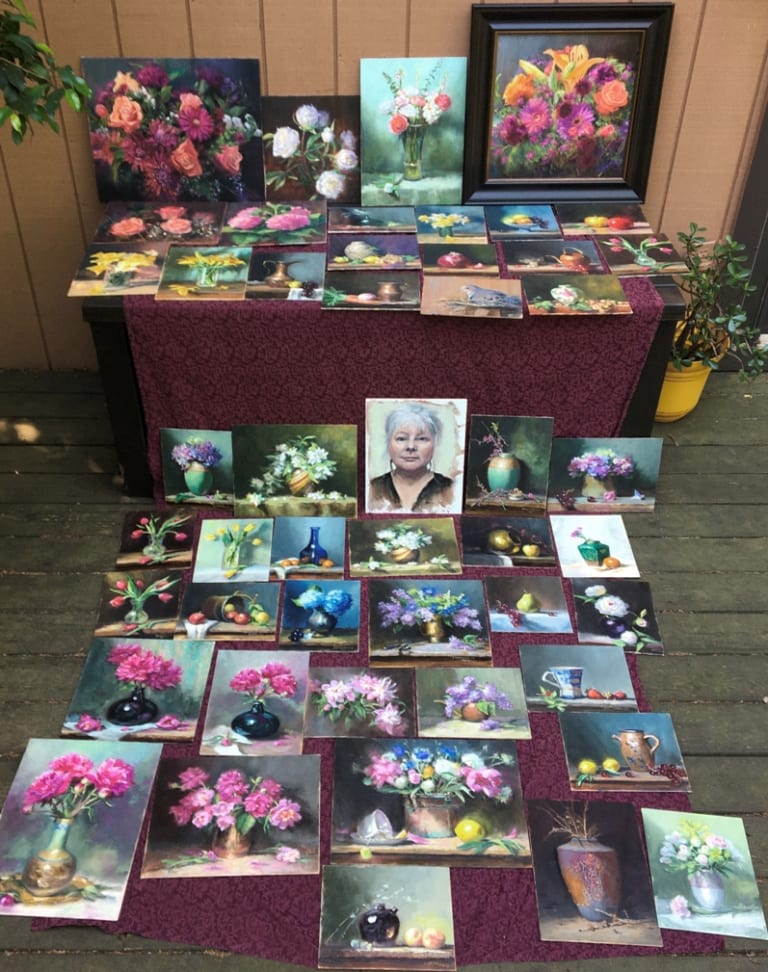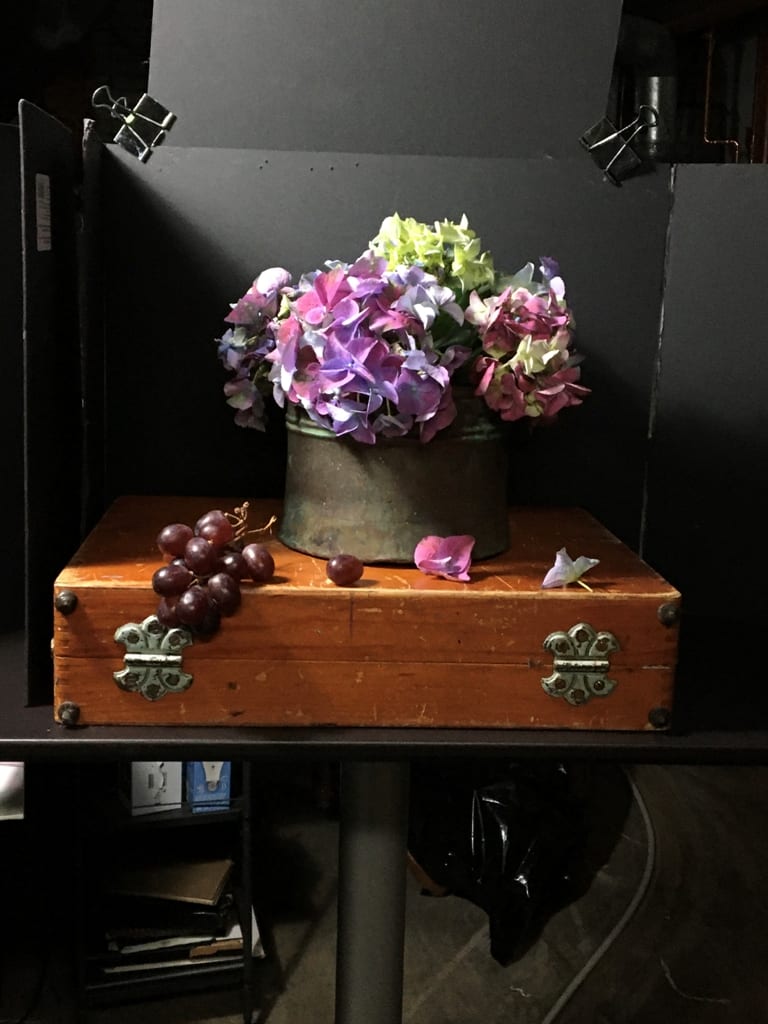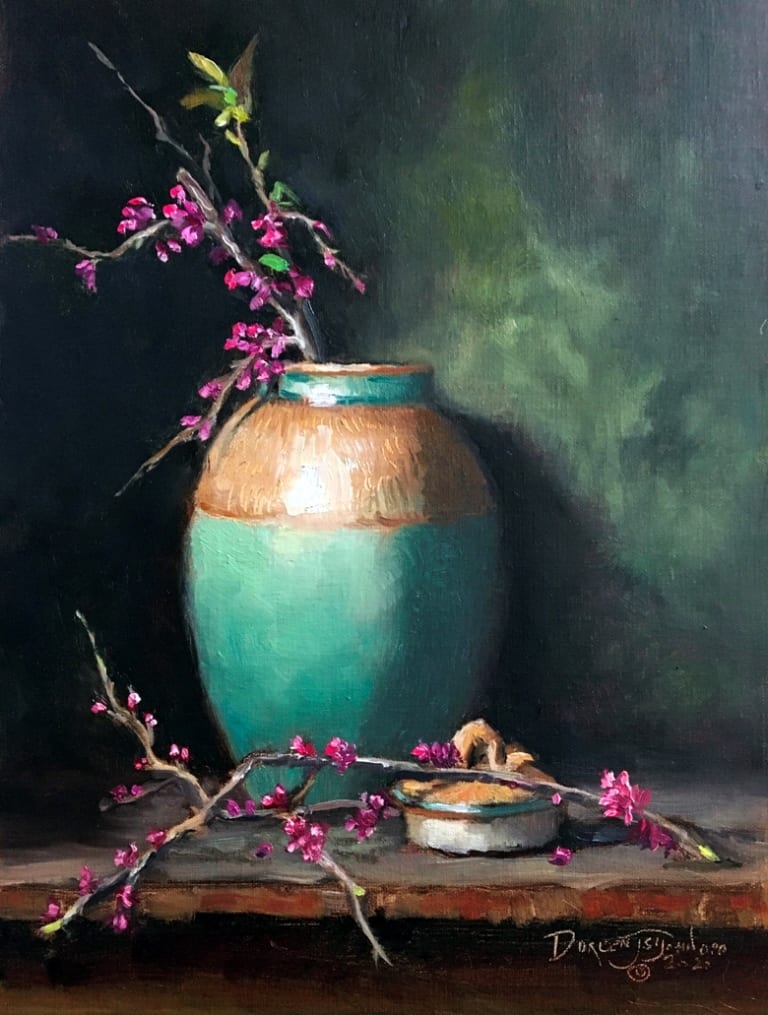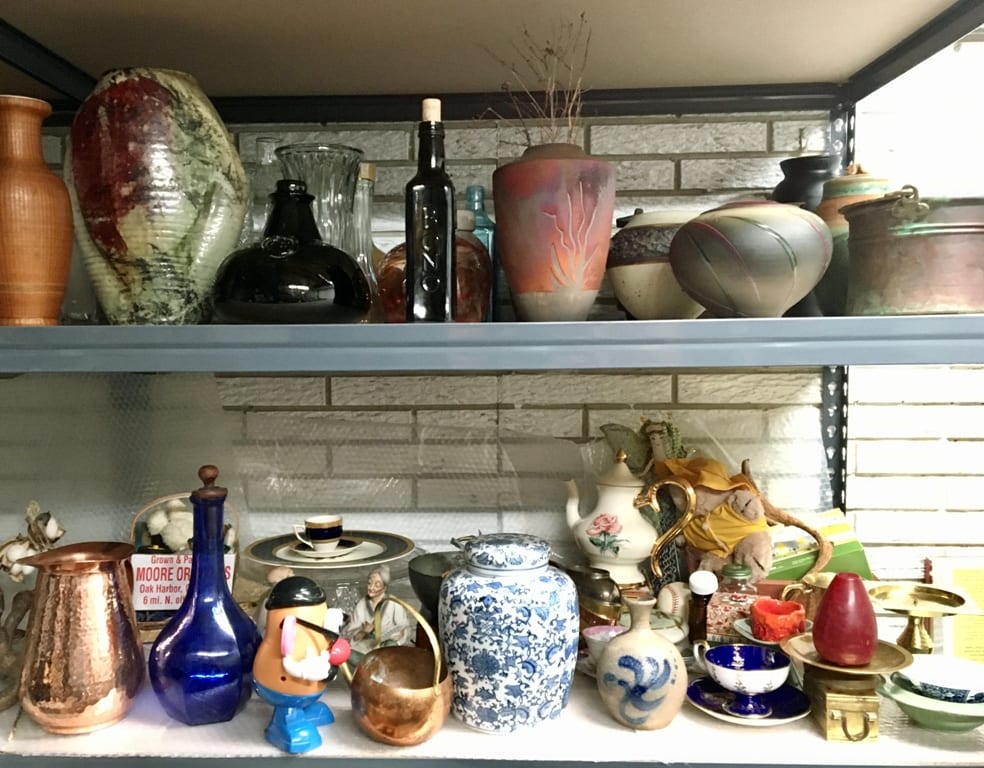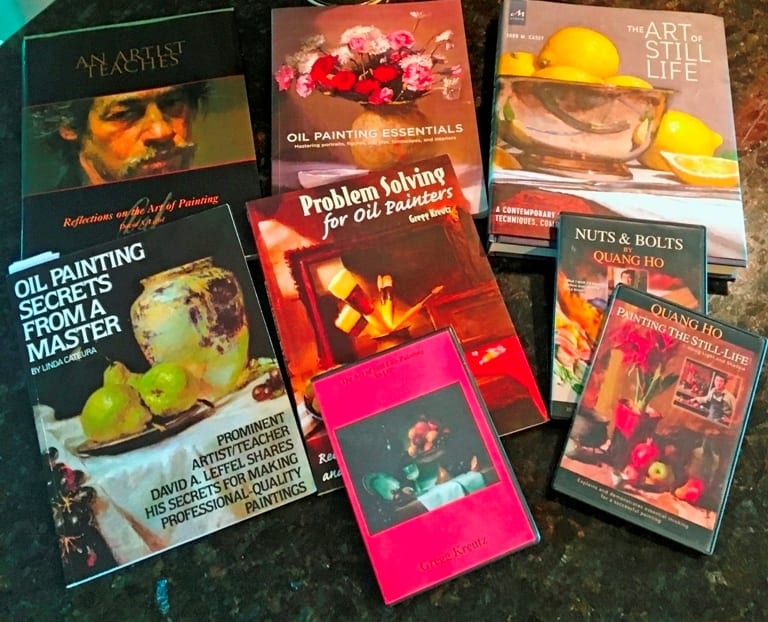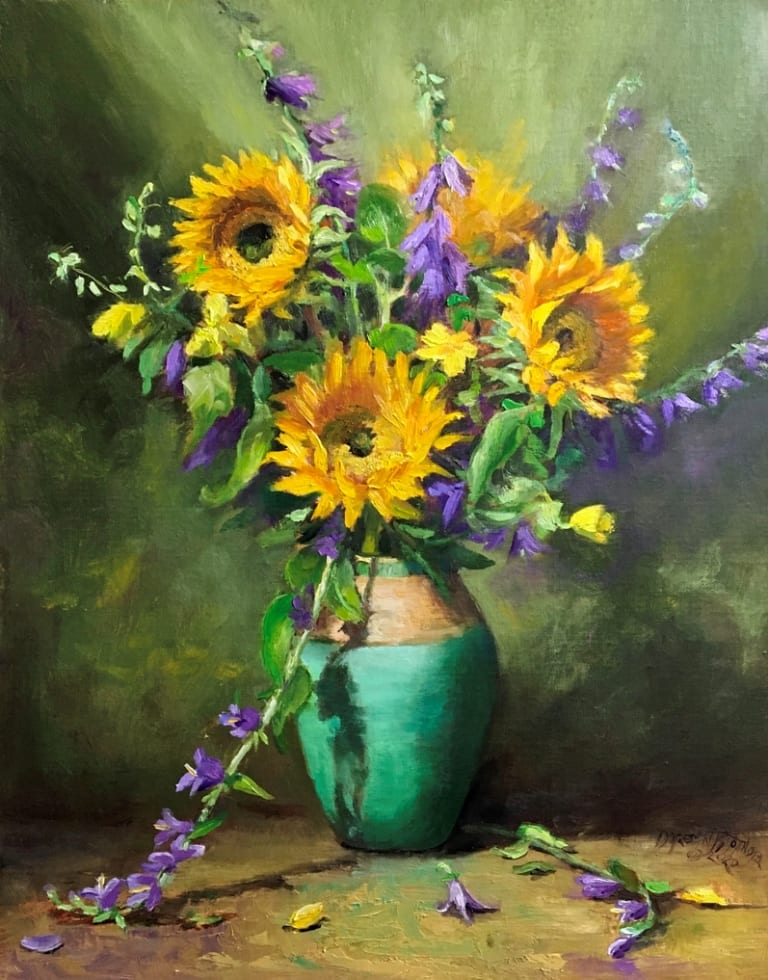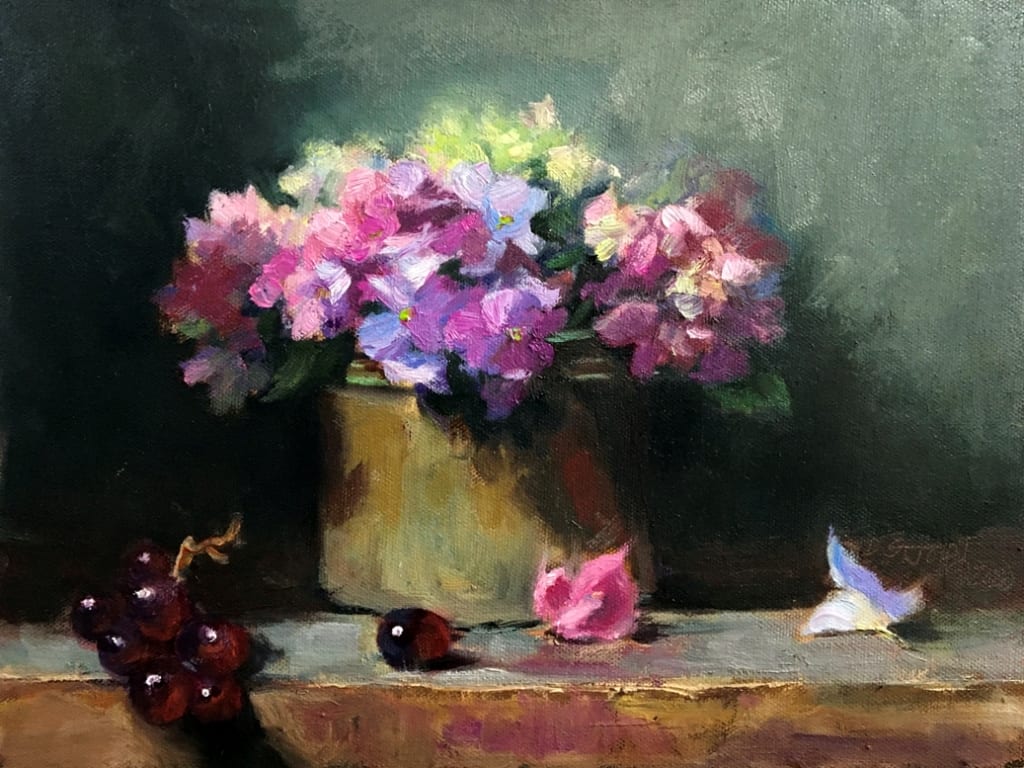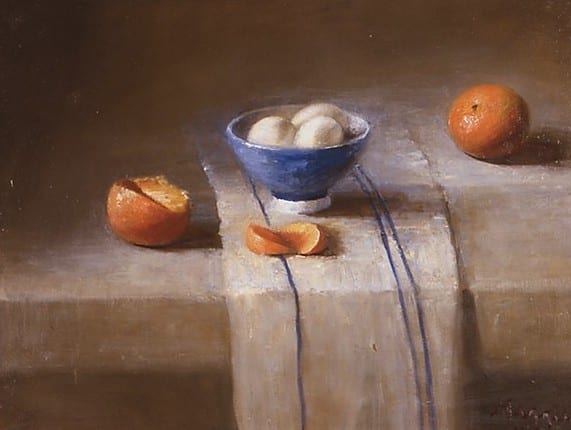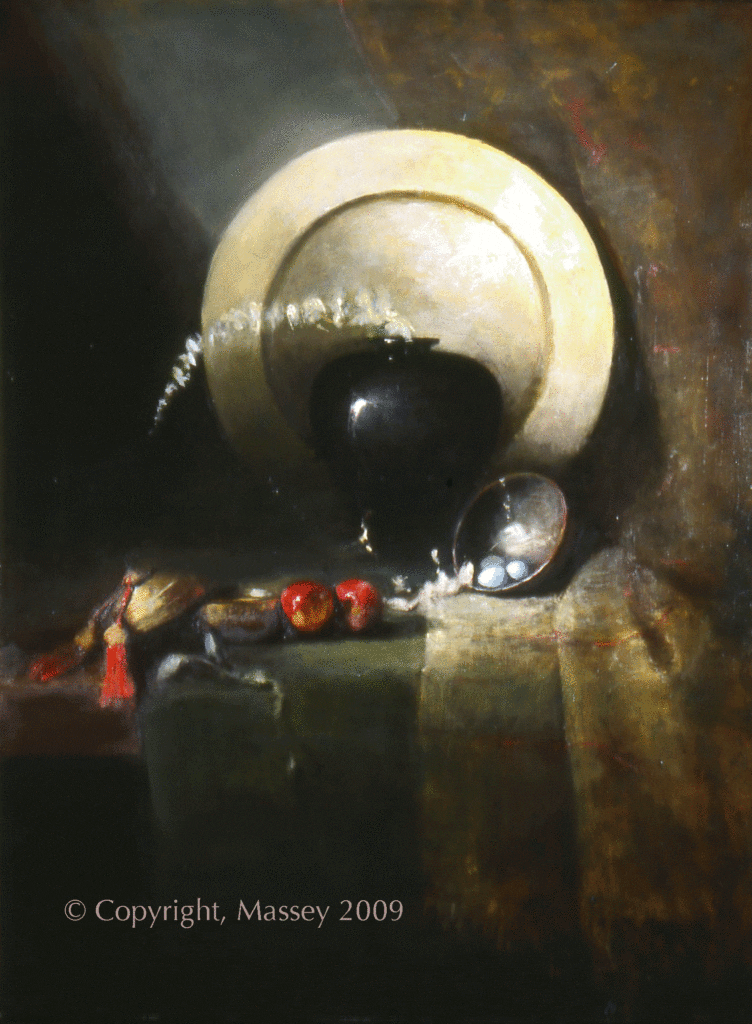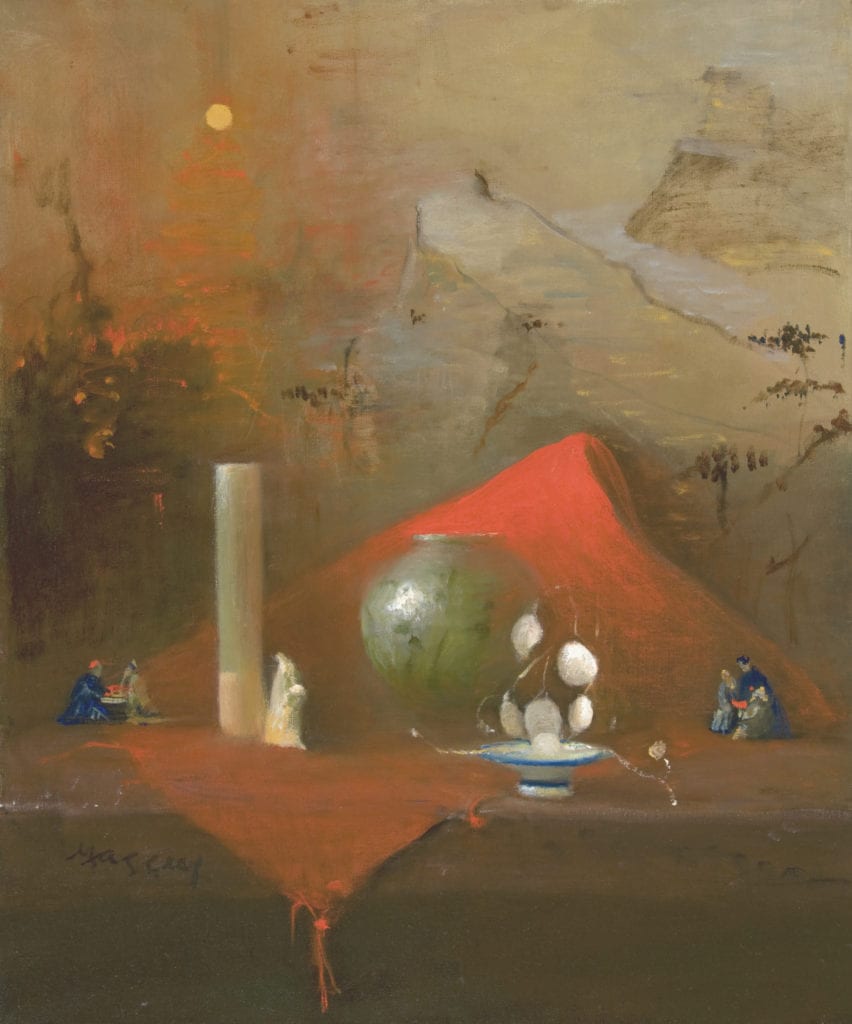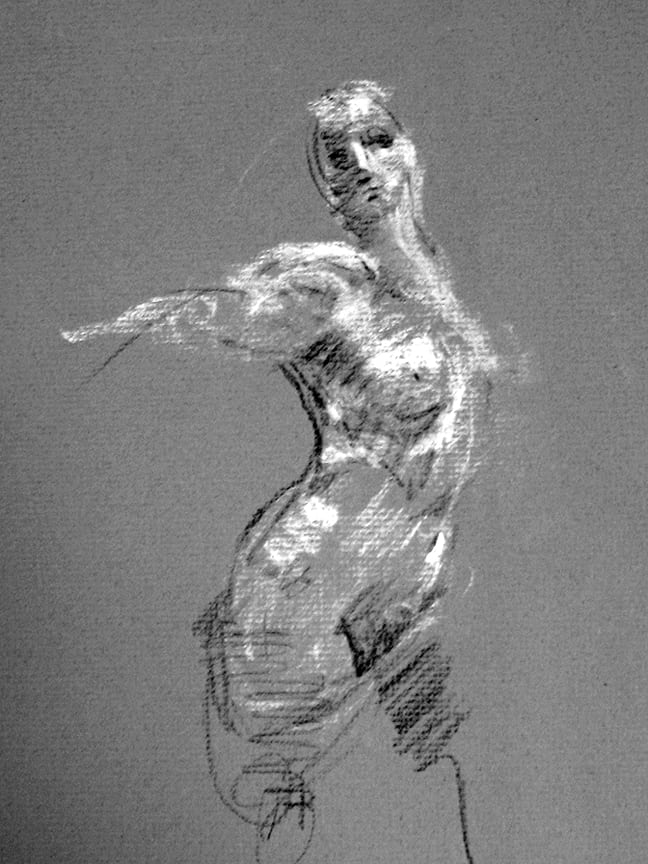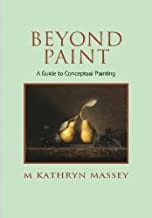BIRTH OF A PAINTING
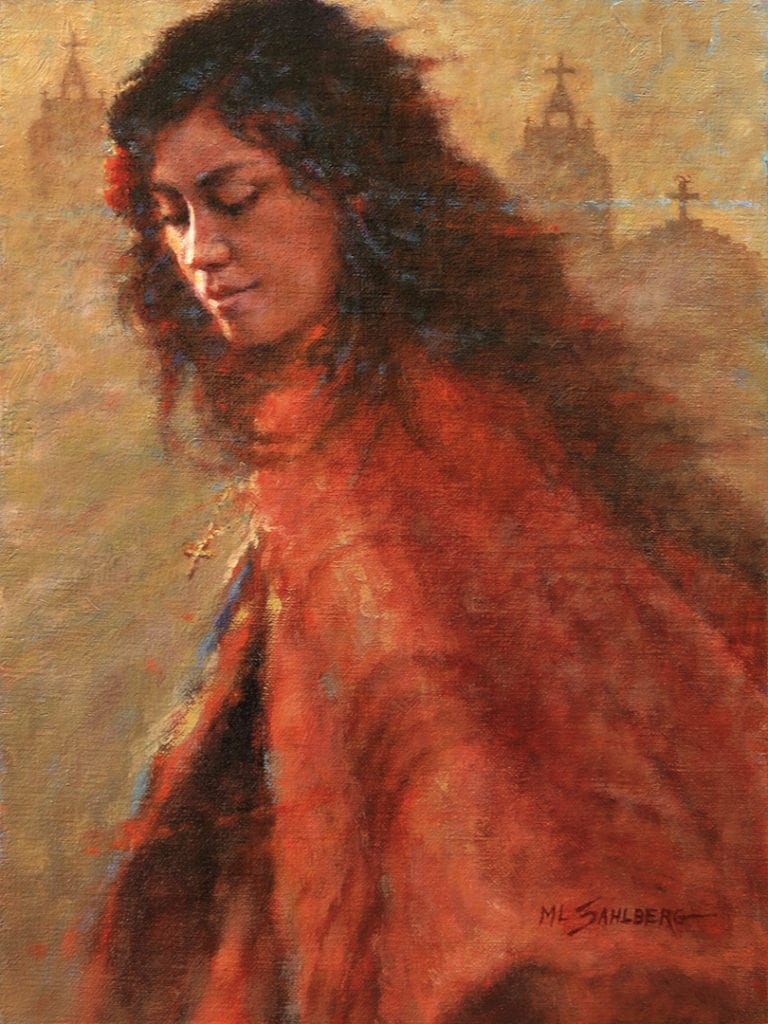
12″ x 9″ – Oil on linen
In the hope of being helpful to those who wonder how a painting develops from start to finish, I would like to share the backstory on this little painting and some helpful resources that played a significant role in its development.
As a former illustrator, each job for a magazine started with a story. When reading an editor’s manuscript, I answered the questions who, what, when, where, why and how to determine what visual elements were needed to illustrate the written story. There are notable and objective pieces in this planning puzzle that define the process. When I carry this process into my gallery painting, I create better paintings. I am a painter of people and their stories. The story is key.
FINDING THE STORY
Pursuing Grace was inspired in the spring of 2018 by a visit my wife, Ellen, and I made to several historic Spanish churches along the High Road to Taos, New Mexico. During our stop at the Las Trampas Church, we met a young man from Argentina who was on a spiritual pilgrimage to these historic Spanish churches. It was during our encounter with this young man that this painting’s story was conceived in my mind. The story that was developing in my mind was of a Latina woman on a spiritual pilgrimage in a historical Spanish church setting. In this case the story and the setting image came together almost simultaneously. The right model for this setting was my next priority.
THE PHOTO REFERENCE
We came home from the trip on the High Road to Taos with a wonderful collection of photos of old Spanish churches to choose from. In early 2019 we were on a day-visit to a community in Mexico. Mid morning we met an expressive Mexican woman selling table cloths and jewelry. As we walked near her she engaged my wife in her desire to sell her products. I wasn’t on a mission that day to find a model for my painting story, but, as an artist, I am constantly noticing people who would be great painting subjects. You might call this my artist’s obsession. This moment was no exception. I saw in her features a common beauty, not glamour, but a universal attractiveness. My mind went directly to the painting I was planning. This was a moment not to waste. Several yards away from the encounter with this woman, I stopped to persuade my wife to go back and support me in my attempt to ask permission to take photos of her. We agreed to go with my instincts.
My wife and I went back and introduced ourselves to the shopkeepers, Maria (not her real name) and her husband. It took humble effort, but after showing photos of some of my work and explaining my intentions, Maria and her husband switched from skeptical resistance to gracious permission.
With only my iPhone to work with, Maria modeled for me on the side of the street next to her shop. Without any special props, I focused on designing the natural light and shadow shapes created by her gesture and facial expressions. Not wanting to overstay our welcome, photos were taken from every perspective in about 15 minutes. When we finished, Maria kindly and proudly introduced us to her grandparents who were working with her that day. We purchase one of her tablecloths and paid her generously for her time. Maria is the model for Pursuing Grace and two other paintings in the series: Embraced By The Light and Found By Grace. All three paintings have sold.
THE COMPOSITION AND DESIGN
Once the story is in place and the photo references are secured, I develop the composition and design of the painting. Composition consists of proportioning the different elements within the painting’s desired format. In this case, the painting format is 12×9. Design is a visual plan to tell the story effectively through the dominant element and subordinate elements, placement, angles, edges and values. In addition to the negative shapes of sky and areas around the figure in my painting, there are two distinct images in Pursuing Grace: the woman in the foreground and the church silhouette in the background.
One of my favorite paintings is the one shown above by Eugène Burnand 1850-1921, a Swiss painter and illustrator from Moudon, Switzerland. It has been my long-standing goal to create a painting that would emulate the motion, light, spirit, and simple beauty of this painting. So I embraced this opportunity! This painting was my inspiration for the design of Pursuing Grace. I wanted to recreate its special qualities, including the spiritual determination of Peter and John.
INFLUENCIAL ARTISTS IN MY PAINTING STYLE
The personal encouragement of three artists is represented in this and other paintings of mine. Richard Whitney, an American painter from Vermont, awakened me to the poetic beauty of edges and silhouettes. In his book, Painting the Visual Impression, he elaborates on edges: soft, sharp, lost and found. Artists Bonita Roberts and Carolyn Anderson pushed me over the edge in the subject of beautiful edges with their impressionistic approach to painting. In Pursuing Grace, the figure’s edges and the silhouette of Las Trampas church are a direct response to the teaching and encouragement of these three wonderful artists.
IN CONCLUSION
Pursuing Grace sold at the Mountain Oyster Club Contemporary Western Art Show on November 24, 2019. Knowing that several collectors put their name in the hat to buy the painting was encouraging. Hearing artists and collectors convey its beauty to me was confirming. It is always my goal to paint a better picture with a meaningful story. For me, this painting suggests there is joyful progress in that direction.
NOTE: In 2019 my wife and I had the opportunity to visit Maria and her family again and give her a print of Pursuing Grace.
ARTIST RESOURSES
Fine Artists To Study: Richard Whitney, Bonita Roberts, and Carolyn Anderson.
Illustrators To Study: Howard Pyle, Harvey Dunn, and N. C. Wyeth.
Painting The Visual Impression by Richard Whitney
